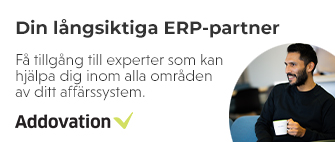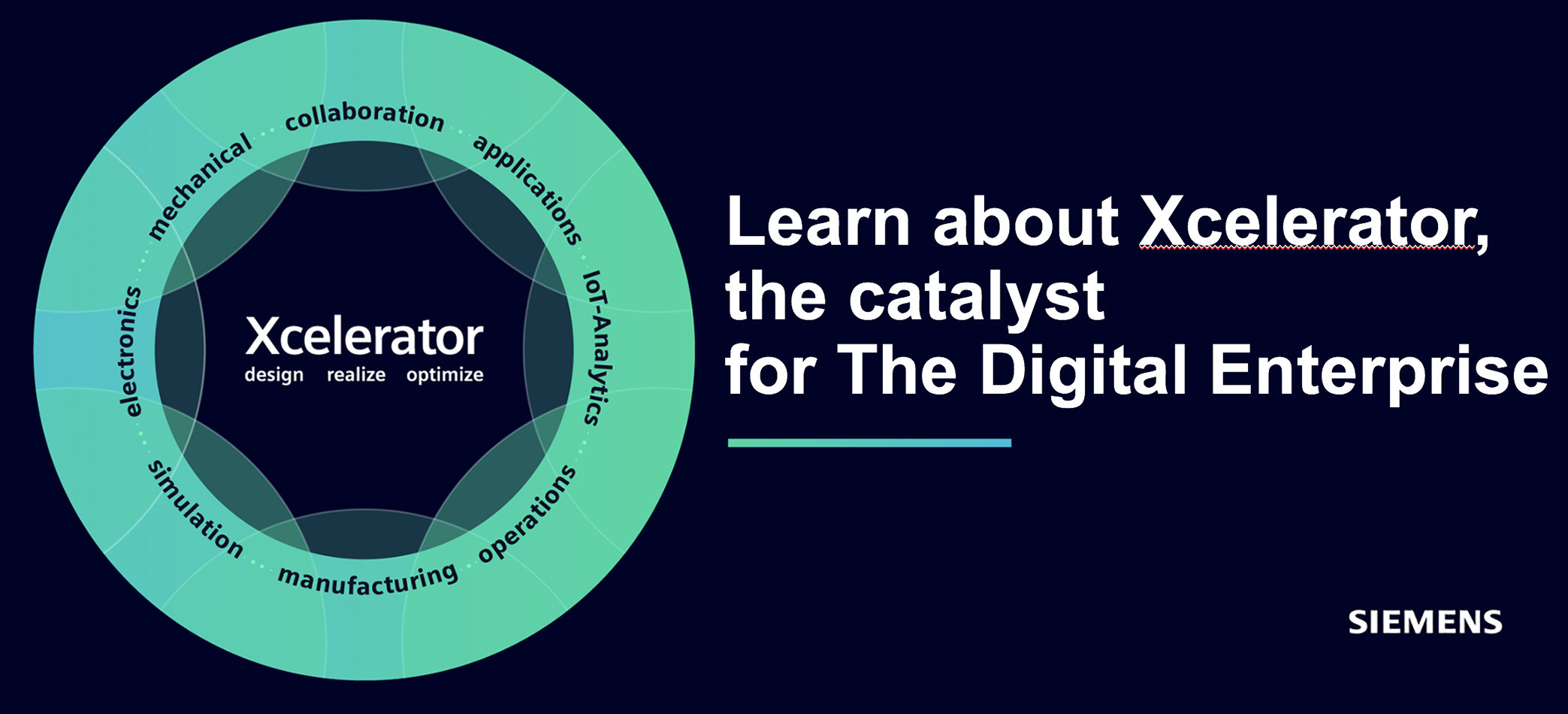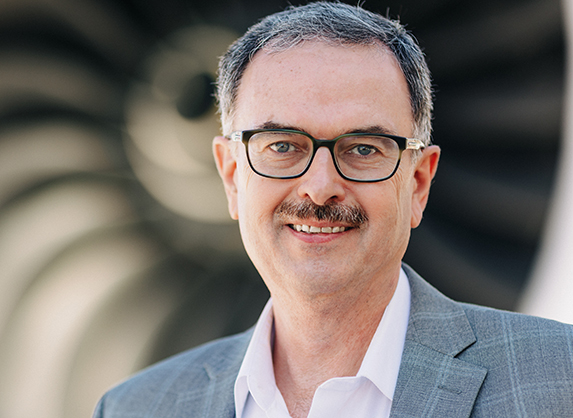There is more money being invested in the aerospace and defense industry than people to spend it in the next five years. Billions of dollars are being poured into all sectors, from commercial and defense to space, at a rate that has not been seen in decades. Yet an increasingly aging workforce and shifts in talent away from the industry are leading to companies lacking the employees to carry out new programs.
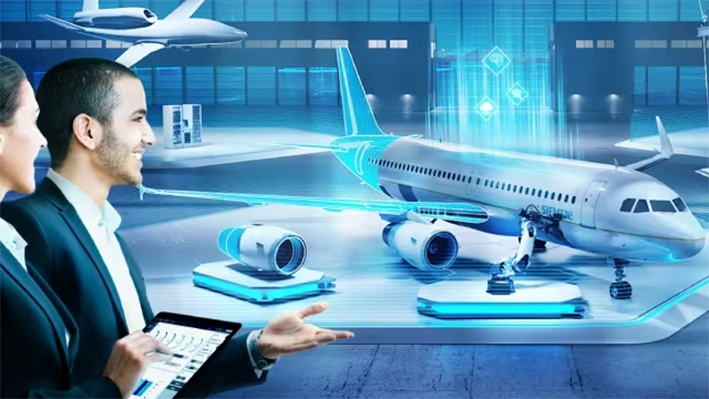
The game is changing
According to a PWC/AIA workforce study in May of 2023, “Over 29 percent of the industry’s workforce is over the age of 55, creating waves of retirement impact that will last ten to twenty years into the future.” All the knowledge and experience these retiring engineers have will walk right out the door alongside them.
Smaller companies especially are struggling to find their replacements. OEMs and larger Tier 1 suppliers have the resources and capabilities to attract more workers, pulling them away from companies lower in the supply chain.
All these factors coalesce into a rather bleak prediction for the future of aerospace. A survey done by Siemens in partnership with Aviation Week shows two thirds of companies surveyed expect to experience workforce issues in the next three to five years. Additionally, one in five companies will not bid new contracts because they do not have enough employees to staff new programs. As a result, 25 percent of the companies surveyed expect to lose revenue within the next year.
The A&D industry is right to try attracting more workers to fill empty positions, but that effort alone will not be enough. The college graduation rate for STEM students is not keeping pace with the need for new aerospace talent, and the competition for STEM talent is far more competitive than it was ten to twenty years ago. If aerospace companies wish to avoid the fallout of this workforce shortage, they must embrace digital transformation to multiply the impact of their existing staff.
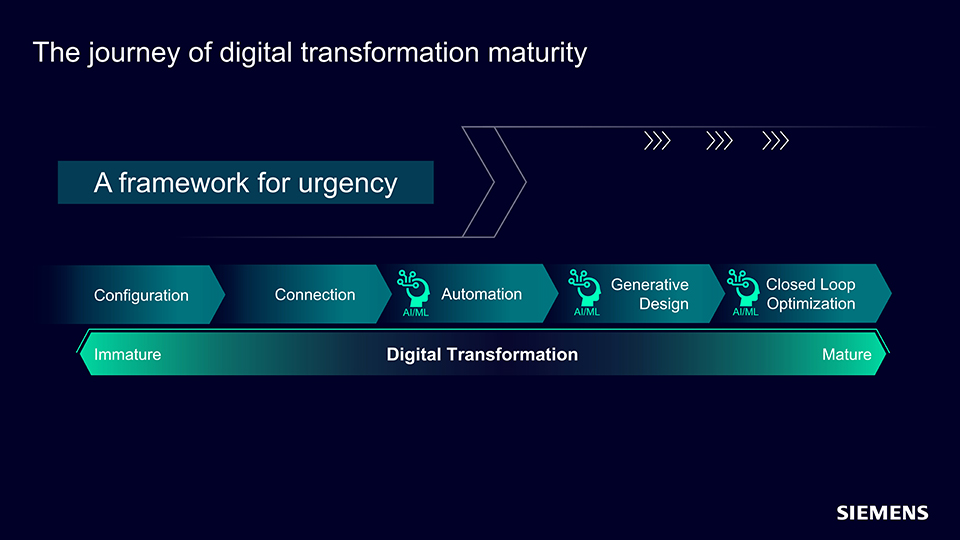
Multiplying impact with digital transformation
Digital transformation is not unfamiliar to the A&D industry. Companies have been implementing it in various forms for the past two decades. However, the current speed and scale of this transformation are not enough to effectively combat the industry’s workforce issues. To help companies assess where they are in their digital transformation journeys, we developed a five-step framework of digital transformation maturity.
Much of the industry is already somewhere along the first two steps of configuration and connection. Configuration is the initial transition from document-based workflows to model-based workflows, the act of creating, changing, and archiving all data related to a product in a safe space for reuse later in the product lifecycle. Meanwhile, connection is the bridging of this data across engineering domains, enhancing traceability and enabling the flow of product data across domains, tools, and databases.
Many companies see connection as the goal of their digital transformation journeys. However, companies can and should go further, utilizing the maximum potential of digital transformation maturity to streamline and amplify their work processes.
By investing in the third step, automation, companies can delegate the costly, tedious tasks that keep their engineers away from their most impactful work, beginning with the mundane tasks before taking on more complex ones. This will enable the next step of generative design, which utilizes artificial intelligence to automatically generate design artifacts based on desired parameters, beginning with individual aerospace components. Lastly, closed-loop optimization can automatically evaluate those design artifacts, relaunching the generative design process for hundreds of iterations to create the ideal design.
Embracing digital transformation maturity offsets the effects of the A&D industry’s workforce shortage by transforming the way work is done in the industry. Not only will this multiply the impact of existing engineers, but it also creates a new, cutting-edge working environment that can attract the next generation of aerospace engineers. By enhancing their processes and tools with configuration, connection, automation, generative design, and closed-loop optimization, A&D companies can find new ways to take off and accomplish all the exciting things they have planned for the future.

